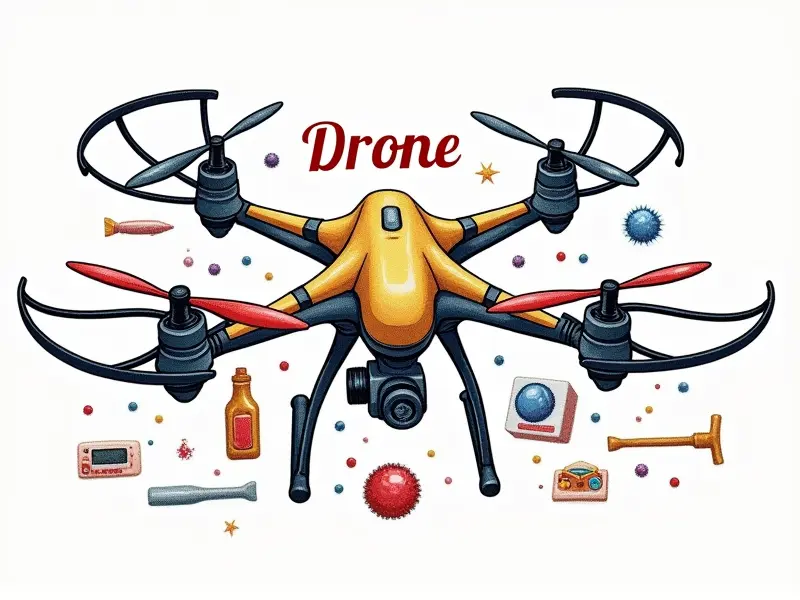Transmitter harmonic distortion

Why Harmonic Distortion Matters in RC Flying
Harmful harmonic distortion can significantly impact the performance and reliability of your remote control (RC) flying experience. Understanding this issue is crucial for enthusiasts who want to ensure smooth, interference-free flights. This article delves into the intricacies of transmitter harmonic distortion, providing insights on how it affects RC communication and offering practical solutions to mitigate its effects.
Understanding Harmonic Distortion in RC Systems
Harmonic distortion occurs when a signal is altered by unwanted frequencies that are multiples of the original frequency. In RC systems, this can lead to degraded performance, reduced range, and erratic control responses. It's essential for pilots to recognize the signs of harmonic distortion and take proactive measures to maintain optimal system integrity.
Boost Your RC Signal with Reduced Harmonics
To enhance your RC signal quality, focus on minimizing harmonic distortions. This involves selecting high-quality components that are designed to reduce unwanted frequencies. By doing so, you can achieve a cleaner and more reliable signal transmission, ensuring smoother flight control.
Selecting Quality Components
- Choose transmitters with built-in filters to block harmonic interference.
- Invest in high-quality antennas that are optimized for your specific frequency range.
- Use shielded cables and connectors to prevent electromagnetic interference (EMI).
Tips to Eliminate Transmitter Frequency Interference
Frequency interference is a common issue in RC flying, often leading to harmonic distortion. Here are some effective strategies to minimize this problem:
Use Diverse Frequencies
- Select frequencies that are less crowded and have fewer competing signals.
- Consider switching to digital systems which offer better resistance against interference.
Implement Frequency Hopping
Frequency hopping technology allows your RC system to switch between multiple channels rapidly, reducing the likelihood of interference from other devices operating on the same frequency.
Common Causes of Harmonic Distortion in RC
Several factors can contribute to harmonic distortion in RC systems:
- Electromagnetic Interference (EMI): Nearby electronic devices and power lines can cause unwanted signals that interfere with your RC communication.
- Component Quality: Inferior quality components may introduce additional harmonics, degrading signal integrity.
- Environmental Factors: Weather conditions such as rain or fog can affect the propagation of radio waves and increase harmonic distortion.
How to Reduce Transmitter Harmonic Distortion
To minimize harmonic distortion in your RC transmitter, consider these practical steps:
Upgrade Your Antenna
- Select an antenna that matches the frequency range of your transmitter.
- Install a high-gain antenna to improve signal strength and reduce interference.
Add Shielding
Shielding can protect your RC components from external electromagnetic fields, reducing harmonic distortion caused by EMI.
Fixing Harmonic Distortion for Better Flight Control
Addressing harmonic distortion is crucial for maintaining precise flight control. Here are some advanced techniques to help you achieve this:
Utilize Active Filters
- Implement active filters in your RC system to selectively remove unwanted frequencies.
- Consider using a low-pass filter to block high-frequency harmonics while allowing the desired signal to pass through.
The Impact of Harmonics on RC Communication
Harmonic distortion can severely impact the reliability and performance of your RC communication. It can lead to:
- Reduced Range: Interference from harmonics can limit how far your signal travels.
- Erratic Control Responses: Harmonic distortions may cause erratic movements or delays in control responses, compromising flight safety.
Advanced Techniques for Clean RC Signals
To achieve cleaner signals and enhance overall performance, consider these advanced techniques:
Digital Signal Processing (DSP)
- Leverage DSP algorithms to filter out unwanted frequencies and improve signal clarity.
- Utilize software-defined radios (SDRs) for flexible and powerful signal processing capabilities.
Preventing RF Interference in RC Communication
Effective prevention of radio frequency interference is key to maintaining a stable and reliable RC communication system. Here are some strategies:
Select Appropriate Frequencies
- Avoid frequencies that are heavily used by other devices.
- Choose less crowded bands for your RC operations.
Enhancing RC Transmitter Quality with Antenna Tweaks
Making small adjustments to your antenna can significantly improve the performance of your RC transmitter:
Optimize Antenna Length
- Tune your antenna length for optimal resonance at your operating frequency.
- Use an impedance analyzer to fine-tune the antenna's electrical characteristics.
Conclusion
Maintaining a clean and reliable signal is essential for successful RC flying. By understanding harmonic distortion, implementing effective prevention strategies, and utilizing advanced techniques, you can enhance your RC communication system and enjoy smoother, more responsive flights. Stay vigilant about potential sources of interference and continuously improve your setup to ensure the best possible performance.

